Ghiordes Knot has been adapted to modern embroidery from a rug making technique that originally came from Turkey. It creates a texture that is like the plush pile of a rug. It is a stitch that has traditionally been used in canvaswork or needlepoint but is enjoying a revival as one of the textured embroidery stitches. You can use Ghiordes knot to represent things like the middle of flowers, thistle tops, dandelion puffs, grass, moss, animal fur, or even Santa’s beard! This stitch works anywhere you need a bit of fluffy texture. I used it to create the bee in the sample below.
Since Ghiordes Knot is a high relief stitch it combines well with other stitches that are extremely flat such as
Satin stitch. Many of the canvas stitches work well too since they too sit flat against the fabric. You can explore other interesting contrasts of texture by exploring the drawn and pulled family of stitches.
An interesting contemporary creative twist to this stitch is to load several fine threads in the needle and worked at the same time. For instance in the same needle you could use a wool thread and metallic blending thread normally used in machine embroidery. You can also create gentle shading by using several different coloured threads together, shifting the colour from one to another as you work row upon row of the stitch.
Ghiordes knot is known by many names, to list a few Turkey Rug knot, Turkey knot single knot tufting, quilt knot stitch, tufted knot stitch, Rya, Damascus Edge and single knotted Smyrna rug stitch.
How to work Ghiordes knot or Turkey knot stitch
To work Ghiordes knot stretch the fabric in an embroidery hoop or frame as it is important to work this stitch at an even tension. In the illustrations below I used stranded cotton. This stitch can be described as a backstitch with a loop hanging between each stitch. Each row is worked above the other which are then cut to form the fluffy pile. This is how you do it.
Unusually you leave the tail of your thread at the front of the fabric as illustrated. Move your needle along the line and make a small
Back stitch.
As you pull the needle through leave a loop of thread on the front of the fabric as illustrated.
Before you pull the thread all the way through make the next back stitch.
Continue creating loops along the line.
As you work if the loops are getting your way and causing a bother hold them out of the way with your thumb.
Work row upon row leaving little space between the rows. It is important to pack the stitches tightly as it is this that holds the threads in the fabric.
Once you have covered the area and completely packed it tight with with many loops of thread then it is time to have fun! Take your scissors and snip and trim the loops.
If you have worked the loops close enough together the stitches won’t come out. At first they will look just like a bunch of threads. Tease them a bit with your needle and rub them a bit. Then trim them to shape.
Have fun with this stitch!
Thread Twisties!
Experimenting with different threads can be expensive. You would normally have to buy a whole skein of each type of thread. My thread twisties are a combination of different threads to use in creative hand embroidery. These enable you to try out stitching with something other than stranded cotton. For the price of just a few skeins, you can experiment with a bundle of threads of luscious colours and many different textures.
These are creative embroiders threads. With them, I hope to encourage you to experiment. Each Twistie is a thread bundle containing silk, cotton, rayon and wool. Threads range from extra fine (the same thickness as 1 strand of embroidery floss) to chunky couchable textured yarns. All threads have a soft and manageable drape. Twisting them around a needle makes experimental hand embroidery an interesting journey rather than a battle. Many are hand dyed by me. All are threads I use. You may find a similar thread twist but no two are identical.
You will find my thread twisties in the Pintangle shop here.
Like this:
Like Loading...
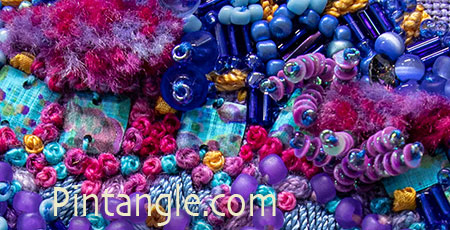

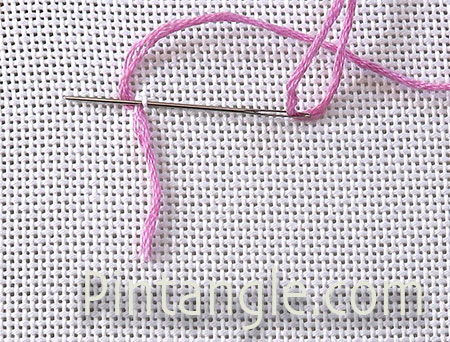

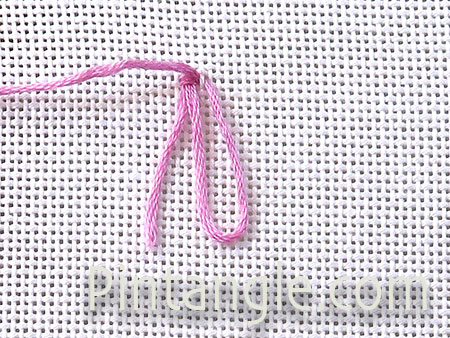
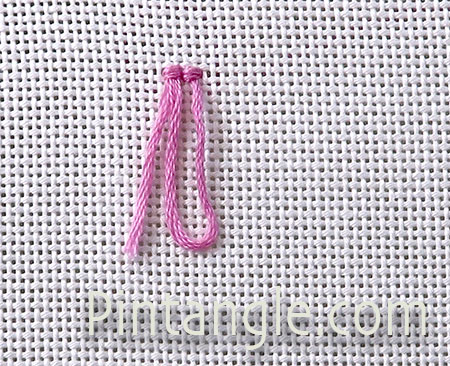
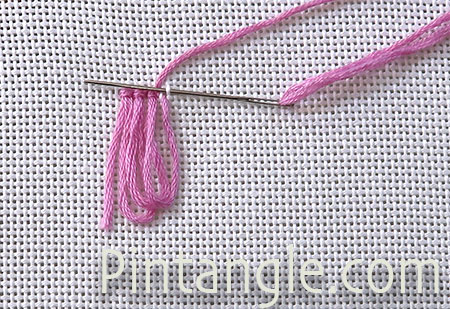
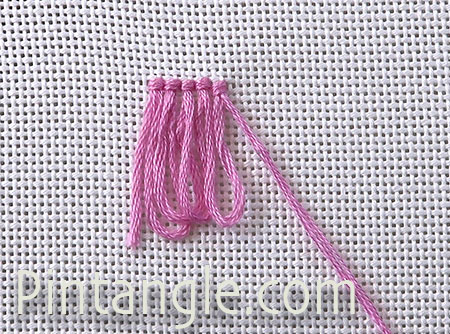
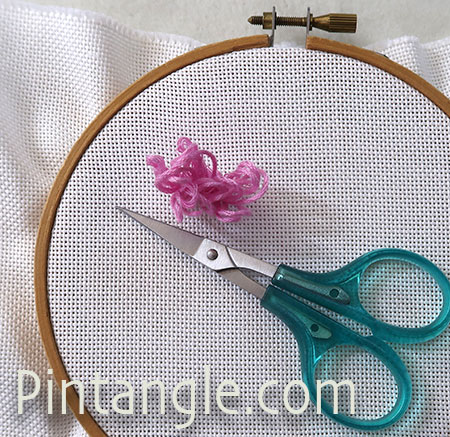
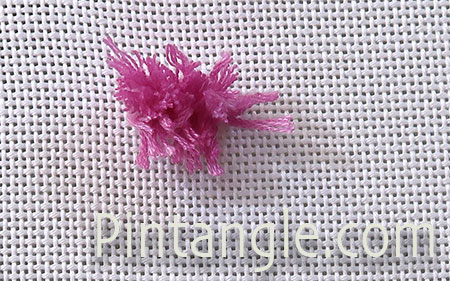

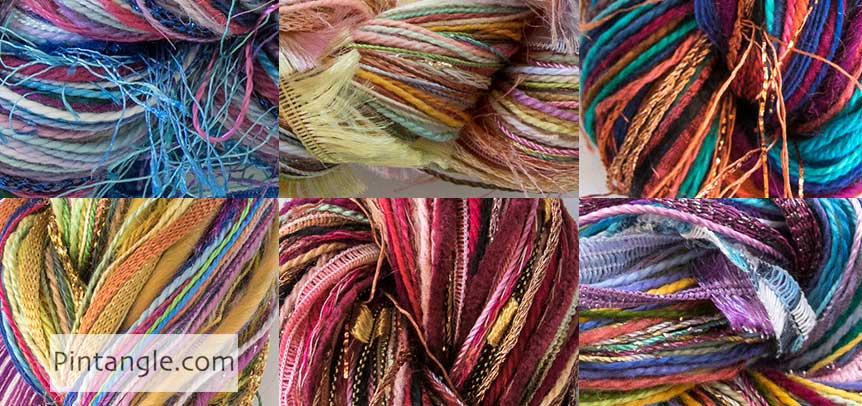


Is there any trick to using two colors, such as creating ermine fur with the black inserts?
HI Eileen – no trick just fill those areas with the different colours
This is a wonderful stitch and with a pair of scissors you can trim the loops into a lot of different shapes. I think stranded floss is perfect for Ghiordes Knot Stitch.
Yes it can be a very sculptural stitch and if combined with stumpwork techniques you can really go to town with the 3D stuff!